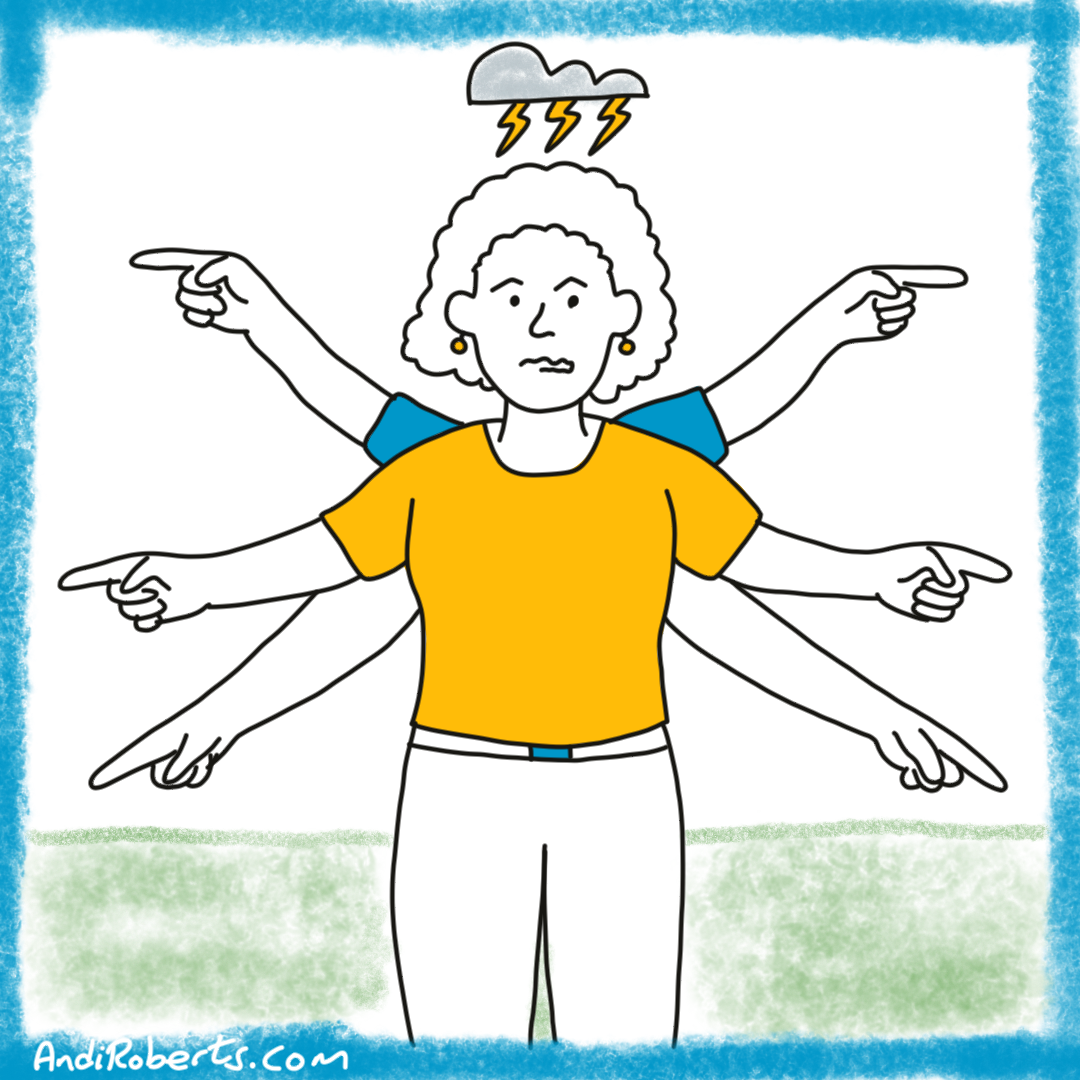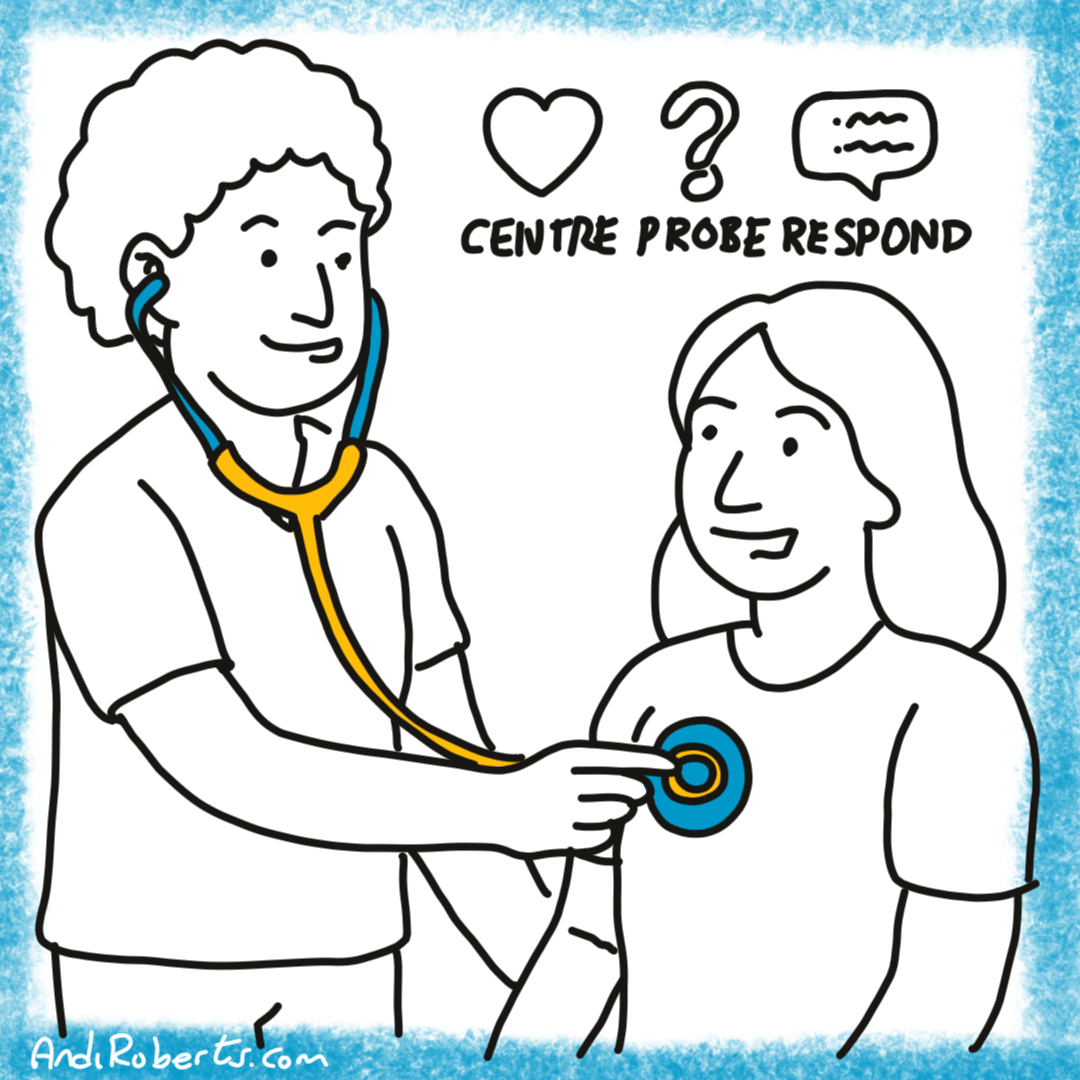Uncertainty is no longer a passing disturbance. It has become the landscape of leadership. Volatility, uncertainty, complexity, and ambiguity (VUCA) now shape our daily work. Technical expertise and efficiency still matter, but on their own they are not enough to sustain us or our teams when pressure builds.
What sets resilient leaders apart is their ability to cope not just after problems arise but before they do. This approach is known as proactive coping. Unlike reactive habits that wait for stress to appear, proactive coping builds reserves, strengthens foresight, and creates the confidence to face challenges before they escalate. It is less about predicting every future problem and more about cultivating the mindset and capacity to adapt, and to see ambiguity as a space for possibility.
These reflections are based on a paper by Aspinwall and Taylor (1997), who explored proactive coping as a process of self-regulation. What follows outlines the different types of coping, the five phases of proactive coping, and seven strategies for strengthening resilience in practice.
Coping and types of coping
Coping refers to the ways we manage stress, demands, and change. It is central to resilience, because our responses shape whether we adapt, stagnate, or burn out. Four types of coping are present in out lives:
Reactive coping
Reactive coping is the instinctive response that steps in after a problem has already occurred. It is firefighting. At times it is necessary, but when it becomes the norm it drains energy and leaves teams feeling constantly on edge. Organisations that rely too heavily on reactive coping risk living in a cycle of crisis without ever addressing root causes.
Reflective questions:
-
When do I notice myself firefighting rather than leading?
-
What is lost when crisis management becomes my main focus?
Anticipatory coping
Anticipatory coping is used when a stressor can be predicted. Leaders may prepare for an audit, a regulatory change, or a competitor’s launch. Planning and rehearsal make these events less daunting. The limitation is that anticipatory coping only works for challenges that can be foreseen. In today’s volatile environment, it is necessary but never sufficient.
Reflective questions:
-
Which foreseeable stressors am I preparing for?
-
Where am I assuming predictability that may not exist?
Preventive coping
Preventive coping aims to reduce the likelihood or severity of stressors before they occur. This might involve building compliance systems, embedding strong processes, or creating knowledge-sharing practices. Done well, it strengthens robustness. Taken too far, it can create rigidity and reduce the space for creativity.
Reflective questions:
-
Where have I created safeguards that now limit innovation?
-
How might I hold prevention and flexibility together?
Proactive coping
Proactive coping looks further ahead. It is about positioning ourselves and our teams not just to avoid harm but to thrive in uncertainty. It builds reserves, strengthens adaptive mindsets, and treats potential stressors as opportunities for growth. Proactive coping is the approach most closely tied to resilience.
Reflective questions:
- What would thriving in ambiguity look like for me and my team?
-
How am I modelling proactive habits in daily practice?
The five phases of proactive coping
1. Resource accumulation
Resilience begins long before disruption arrives. Leaders who prepare invest not only in budgets or materials but in the quieter reserves that steady them when pressures rise. Emotional steadiness, trusted networks, relevant skills, and time buffers are the foundations of coping. Without them, even small challenges can feel overwhelming. With them, leaders and teams are less fragile and more able to face the unexpected with choice.
Tactics:
-
Build reserves of energy by treating rest, nutrition, and recovery as essentials. Leaders who protect their physical base make clearer decisions and withstand pressure more effectively.
-
Strengthen support networks by cultivating diverse and reciprocal relationships. Networks that offer both encouragement and challenge become anchors in times of strain.
-
Invest in learning by developing new skills, refreshing old ones, and widening perspective. Growth turns emerging demands into opportunities rather than threats.
Reflective questions:
-
Which reserves do I most rely on, and which have I neglected?
-
What investment today would make me more resilient tomorrow?
2. Attention and recognition
Proactive coping is not only about action, it begins with noticing. Leaders who practise attention and recognition pay close attention to weak signals and subtle shifts. These may be early signs in the market, slight changes in team morale, or patterns in data. Attention is not worry, it is the discipline of being present enough to see what might otherwise be missed. Recognition opens the possibility of choice.
Tactics:
-
Conduct horizon scanning by creating regular practices to monitor industry trends, customer experiences, and competitor activity.
-
Encourage upward communication by making it safe for colleagues at all levels to share concerns or insights.
-
Develop situational awareness by training teams to recognise early patterns in behaviour or systems that could signal disruption.
Reflective questions:
-
What signals am I currently ignoring?
-
Who in my organisation notices change before I do, and how am I listening to them?
3. Initial appraisal
The way we first interpret a challenge shapes everything that follows. Leaders who automatically frame events as threats spread anxiety. Proactive coping invites a pause, a chance to ask what possibilities or learning might live inside the disruption. This does not deny risk, it reframes it so that fear is not the only story. Framing challenges as opportunities changes the culture from one of defensiveness to one of curiosity.
Tactics:
-
Use the technical versus adaptive test to distinguish between problems solvable with expertise and those requiring cultural or behavioural change.
-
Apply the five whys technique to uncover root causes rather than stopping at surface explanations.
-
Seek multiple perspectives by inviting diverse voices to help interpret the situation and reduce blind spots.
Reflective questions:
-
Do I usually frame challenges in ways that generate fear or curiosity?
-
Whose perspectives could help me make a fuller appraisal?
4. Preliminary coping
Resilience grows through small steps taken before clarity is complete. Preliminary coping is about early, low-risk actions that reduce uncertainty and generate learning. These steps may not solve everything, but they show that the situation is workable and that the team has agency. Acting early creates momentum and prevents paralysis.
Tactics:
-
Run small experiments to test possible responses, generating insight before committing to large-scale action.
-
Apply a growth mindset by treating setbacks as information to learn from rather than failures to be avoided.
-
Mobilise cross-functional collaboration so that different skills and perspectives shape early responses.
Reflective questions:
-
Where could I take a small step now to reduce future uncertainty?
-
What message do I send when I delay until everything feels certain?
5. Elicit and use feedback
The final phase of proactive coping closes the loop. Feedback turns coping from survival into growth. Leaders who seek input and act on it build a culture where learning is normal and mistakes are treated as information. Feedback in this sense is not blame but nourishment. When leaders use feedback well, resilience deepens across the organisation.
Tactics:
-
Conduct after-action reviews with teams to reflect on what worked, what did not, and what could be done differently.
-
Create feedback loops that bring insights from staff, customers, and partners quickly to decision-makers.
-
Track both outcomes and processes so that resilience is measured not only by results but by how challenges are handled.
Reflective questions:
-
How often do I pause to learn from the way we cope, not just from what we achieve?
-
Am I building systems that welcome feedback as fuel for growth?
Seven strategies for proactive coping
1. Anticipate future challenges
Coping is easier when we are not surprised. Anticipation is the practice of looking forward, noticing what might be emerging, and preparing before impact is felt. It does not require certainty but it does require imagination. When teams anticipate together, they become participants in shaping the future rather than victims of change.
Tactics:
-
Hold regular conversations that explore what lies ahead, using both data and intuition.
-
Involve people across the organisation in scenario planning to broaden ownership of anticipation.
-
Identify early-warning indicators and make them visible so that preparation begins before crises develop.
2. Create long-term goals
Stress feels heavier when the horizon is only a week away. Long-term goals anchor present challenges in a larger story. They help people see today’s difficulties as part of a journey, not the whole journey itself. Goals that stretch further encourage perseverance and reduce the temptation to overreact to short-term strain.
Tactics:
-
Shape goals that go beyond immediate targets and connect them to shared purpose.
-
Keep showing how today’s work links to tomorrow’s vision, so meaning is not lost under pressure.
-
Adjust goals as circumstances shift but maintain a sense of long-term direction.
3. Create a support network
No leader copes well in isolation. A strong support network brings emotional steadiness, practical advice, and opportunities for shared problem-solving. Networks protect against tunnel vision by widening perspective. They reduce the loneliness of leadership and create community around resilience. Cultivating these networks is not an emergency tactic but an ongoing practice of stewardship.
Tactics:
-
Build trust in relationships before they are tested.
-
Make networks diverse, drawing in different backgrounds, skills, and perspectives.
-
Keep reciprocity alive, offering support as much as asking for it.
4. Raise resilience capability
Resilience is not a fixed trait but a capability that can be cultivated. Daily practices of wellbeing and reflection strengthen leaders and ripple out into their teams. By treating resilience as essential rather than optional, leaders set a tone where people feel more able to adapt. Modelling these habits gives permission for others to do the same.
Tactics:
-
Protect daily rhythms of sleep, nutrition, exercise, and recovery.
-
Use mindfulness and reflection to notice emotional patterns before they become reactions.
-
Provide resources and training that help the whole team build resilience.
5. Develop a problem-solving mindset
Stress can narrow our vision, leading us to protect or defend. A problem-solving mindset opens space for curiosity. Instead of only asking what is wrong, leaders ask what might be possible here. This reorientation turns challenges into invitations to learn and innovate. It encourages imagination and reduces fear.
Tactics:
-
Facilitate spaces where people can explore options freely before judging them.
-
Reframe challenges by asking what opportunity they might contain.
-
Respond with calm exploration, showing that creativity matters as much as speed.
6. Build frequent reviews into work
Resilience grows when learning is continuous. Reviews are not about blame, they are about noticing. By pausing to reflect on what worked and what did not, leaders and teams capture insight and prevent repetition. Regular reflection keeps strategies alive and helps adaptation become natural.
Tactics:
-
Schedule short review sessions at natural points such as project completions.
-
Use simple guiding questions — what worked, what did not, what will we change — to keep reflection grounded.
-
Involve everyone so that reviews build relationships as well as insight.
7. Provide resources for continuous learning
Without growth, coping erodes over time. Continuous learning equips leaders and teams to face new demands with confidence. Learning is not a course to attend but a culture to sustain. Leaders who show their own curiosity and provide access to development make resilience renewable.
Tactics:
-
Offer formal opportunities such as training, mentoring, or professional programmes.
-
Encourage informal learning by creating space for reflection and peer exchange.
-
Model curiosity by speaking openly about personal learning and inviting others to do the same.
Conclusion
Proactive coping is not simply a toolkit, it is a way of being. It asks us to live with intention in the face of volatility, to see uncertainty not only as a danger but as an opening. The leaders who practise it choose to anticipate rather than react, to connect today’s efforts with tomorrow’s purpose, and to strengthen both their own resilience and that of their communities.
This is less about mastering a set of techniques and more about cultivating disciplines. It is the discipline of keeping long-term goals visible when urgency threatens to consume us. It is the discipline of building networks that remind us we are not alone. It is the discipline of facing challenges with curiosity, of reviewing our progress honestly, and of making learning part of the everyday fabric of work.
In uncertain times, proactive coping does not guarantee ease, but it does distinguish those who merely endure from those who help their organisations thrive. It is an invitation to lead with foresight and with trust in the capacity of people to grow through difficulty.
Reflection questions
-
What future challenges am I already preparing for, and where am I still waiting to react?
-
How visible are the long-term goals that give meaning to my team’s present struggles?
-
Who are the people I rely on for perspective, and how am I contributing to their resilience in return?
-
What habits am I cultivating that strengthen my capacity to cope, and how am I modelling them?
-
Do I meet difficulties with curiosity, or with defensiveness?
-
How regularly do I pause with my team to review, reflect, and adapt our course?
-
In what ways am I fostering a culture of continuous learning rather than one of short-term fixes?
Do you have any tips or advice? What has worked for you?
Do you have any recommended resources to explore?
Thanks for reading!
Reference
Aspinwall, L.G. and Taylor, S.E. (1997) ‘A stitch in time: Self-regulation and proactive coping’, Psychological Bulletin, 121(3), pp. 417–436.







Leave A Comment